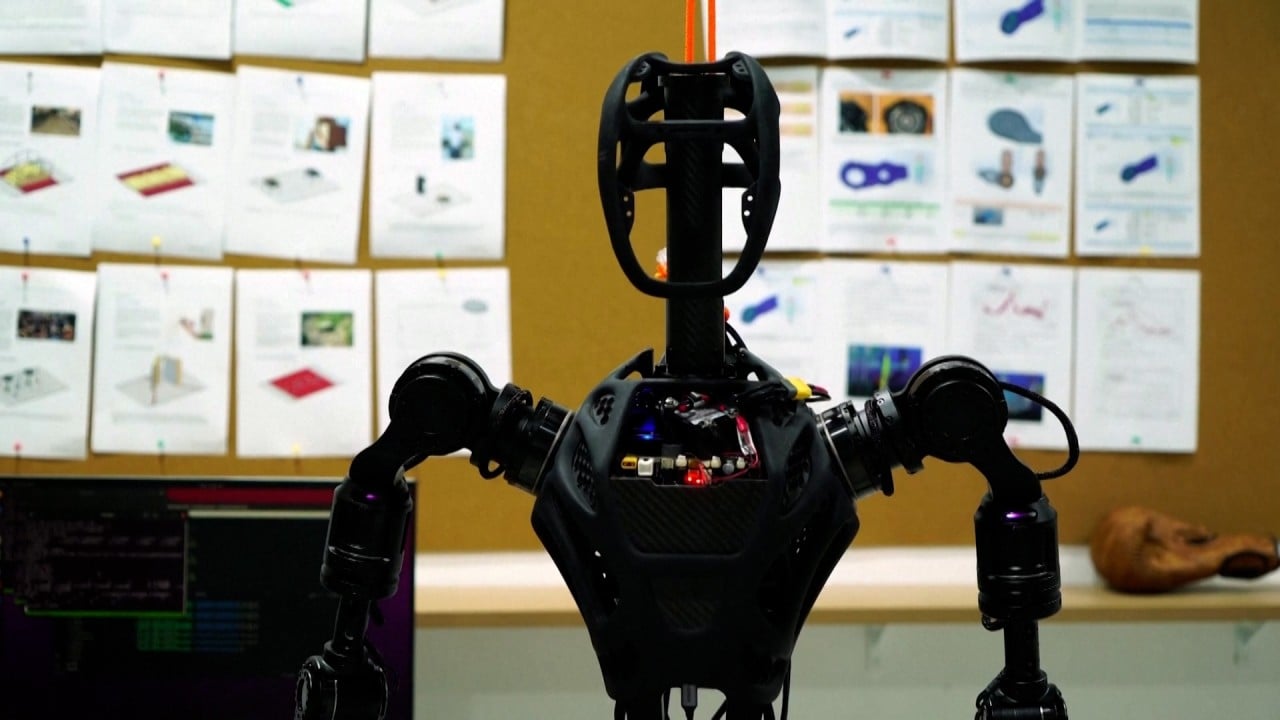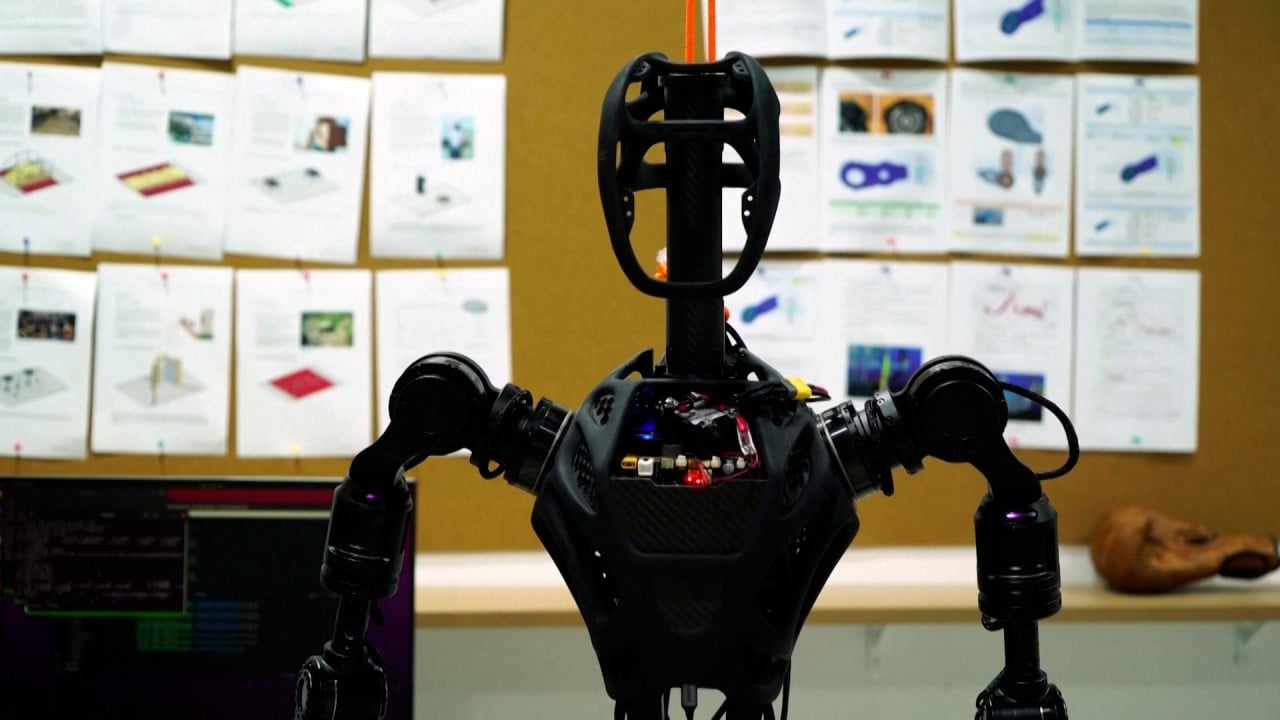Scientists have developed a light-driven launch system for miniature robots inspired by squirting cucumbers, a development that could have applications in medicine, agriculture, aerospace – and even ballistics.
The team’s soft hydrogel and graphene launcher can release energy in just 0.3 milliseconds, allowing the device to rapidly take off from both wet and dry surfaces and travel a distance 643 times its own body height.
It could be used to develop miniature medicinal robots for deep tissue sampling, smart-seeding agriculture robots, and it could even have the potential to be used like a soft bullet.
“Robotic tasks that require robust propulsion abilities such as jumping, ejecting or catapulting require power-amplification strategies where kinetic energy is generated from pre-stored energy,” the researchers from China and the United States said in a paper published last month in peer-reviewed journal Nature Materials.
“Such devices typically need the energy release over short time durations,” in order to produce an adequate driving force, said lead author Wang Xin, a doctoral student at the Chinese University of Hong Kong (CUHK).
But existing methods relying on chemical or elastic energy such as latch-spring or buckling instability mechanisms can have limitations, Wang said, such as insufficient energy storage, long energy release periods and complicated fabrication.
“Here we report an engineered accumulated strain energy-fracture power-amplification method that is inspired by the pressurised fluidic squirting mechanism of Ecballium elaterium,” the team wrote in the paper, referring to squirting cucumber plants.
The fruit of the squirting cucumber plant builds up pressure and elastic energy as it grows, eventually bursting open when ripe as a method to rapidly disperse its seeds.
In a similar way, when exposed to high-energy light irradiation, graphene embedded in the team’s hydrogel launcher heats up, causing water in the gel to turn into vapour. The hydrogel expands from the growing vapour pressure and eventually fractures, launching itself into the air.
The small, disk-shaped launcher has a diameter of just 7mm (0.27 inches) and a thickness of 3mm, but it is able to travel more than 1.93 (6.33 feet) metres vertically, said the researchers from CUHK, Zhejiang University, Harbin Institute of Technology (Shenzhen) and Carnegie Mellon University.
Wang said the G-hydrogel launcher’s motion performance exceeded “all the current engineering miniature robot systems with jumping/launching motions”.
“The power amplification strategy may be applied to medical robots for scenarios that require force output, such as deep tissue sampling, stent delivery and [deployment], tissue resection [and more],” he said.
The adaptable launch system, which the team tested on still and moving surfaces including leaves, bark and viscous liquids, could be used to develop untethered medical robots that require a high force output to enter deep tissue.
Within the paper, the team demonstrated the use of the launcher in a smart seed robot by attaching a seed and radio-frequency identification (RFID) to the hydrogel matrix. When launched into a smart seed bed, the RFID is read by sensors to identify the seed type and broadcast care instructions.
Wang said the system could potentially be applied in ballistic weapons as well, though the researchers “have not conducted in-depth research in this direction”.
The team’s launcher is activated by a near-infrared laser, however they also tested the use of focused sunlight to activate the launcher, “suggesting the potential for natural light as a power source”.
Wang said the use of sunlight would expand the potential applications of the launchers, including for use in lunar or space exploration robots.
The launcher was also tested to see if it had a predictable launch pattern, and results indicated that it could be used to develop “soft robots capable of motion with prescribed trajectories and transportation to prescribed locations”.
Wang said a growing number of breakthroughs were being reported in bionics, the science of making artificial systems inspired by existing living systems.
He added that nature had gone through billions of years of evolution, and therefore could offer inspiration for scientists to draw from to solve real-world problems.



